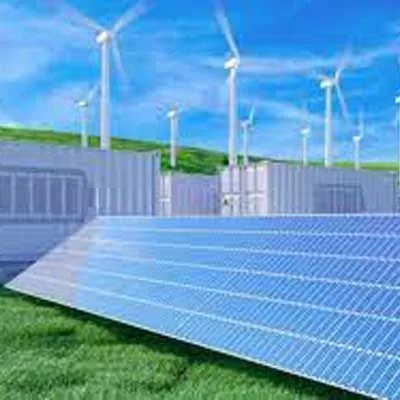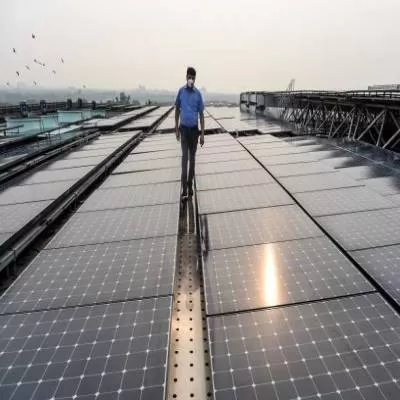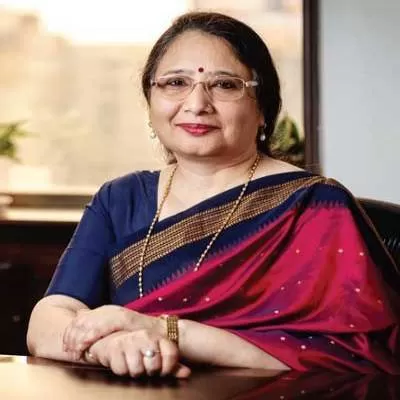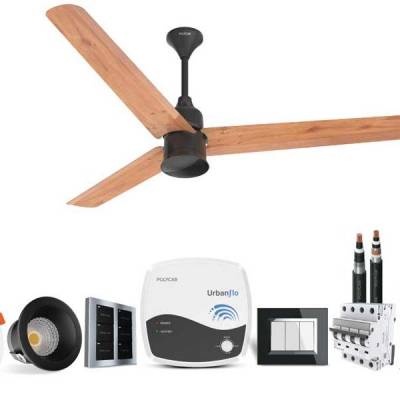- Home
- Infrastructure Energy
- POWER & RENEWABLE ENERGY
- Solar mini-grids illuminate lives in rural UP, transforming communities
Solar mini-grids illuminate lives in rural UP, transforming communities
"I now have a say in my home, which has nine members. The village has also benefited from better power supply, and I receive some credit for it," shared the 33-year-old woman, who also found a suitable match after becoming financially reliant.
Rani Singh, a middle-aged woman, found her life made worthwhile by the monthly earnings from her flour mill. However, the rising cost of diesel over the past few years impacted her profits. In November 2021, she made a transformative decision to make her business profitable again.
This resident of Lalpur Jaswantpur village switched from fossil fuel-driven technology to green energy to run her flour mill and recharge her small business. "We worship Sungod as an incarnation of Vishnu, but we never thought his blessings would manifest in this way," stated the 67-year-old woman.
In Pipri village, Ramrani Devi's life has been liberated from the darkness deepened by sooty grime that used to layer the walks of her kitchen every single day. Although the happiness of the Ujwalla Yojana is yet to reach her kitchen, the power of solar energy has made her life easier.
"I can at least relax under the fan after the sweltering heat in summers and humid evenings of the monsoon months," said the woman.
Mothers in Akhbarpur Talhu village are pleased with their government primary school, which offers facilities that many lack. With lights and fans for children and smart classes for students in grades 1-3, uninterrupted power supply ensures that interactive classes are a regular feature for all.
"The children in the school are also blessed by solar power," said Vinay Kumar Sharma, the school teacher in charge.
Shalini and Anuradha in the same village contribute to the economy of their fathers, both of whom are small farmers. The girls work in the village's skill development centre, teaching stitching and Chikankari embroidery to native women.
All these individuals exemplify how solar energy is positively impacting the quality of life in rural areas of Uttar Pradesh. The common thread in their stories is the Solar Mini-Grid scheme under the HCL Foundation's Samudaya project.
A mini-grid, also known as microgrids, consists of small-scale electricity generators interconnected to a distribution network that supplies electricity to a small, localised group of customers. They typically operate independently from the national transmission grid.
According to the United Nations Industrial Development Organisation, renewable energy mini-grids, powered by solar, wind, or hydro, are emerging as essential contributors to energy access, especially in rural areas, providing reliable and high-quality electricity to communities and businesses.
Similar stories of positive change can be witnessed in places like Kushinagar, Rae Bareli, Lakhimpur Kheri, Sravasti, Unnao, and Siddhartnagar, not unique to Hardoi.
Most organisations entering the realm of solar mini-grids in Uttar Pradesh are driven by the realisation that energy infrastructure serves as the foundation for advancing social and economic progress. It ensures the provision of necessities, ultimately elevating the quality of life for households and fostering increased income generation.
Research has demonstrated a positive link between electricity consumption and the Human Development Index. Developed countries exhibit high per capita energy consumption compared to developing nations. The dividends are substantial, especially when the source of energy is clean, safe, and affordable.
Conversely, the absence of electricity profoundly impacts the well-being, health, and income of rural inhabitants, particularly during their most productive hours. The lack of electricity in health centres jeopardizes maternal and child health, while the absence of electricity inhibits safe drinking water, contributing to the outbreak of diseases like cholera and dysentery. Students also face significant challenges, as most school equipment remains idle due to the absence of electricity, and completing homework often necessitates a source of evening lighting.
For the initial three decades of her life, Jaitoon Bano received little respect from life itself. As a resident of Tutiyara village, she believed that household chores and a second-class status were her destined path until a turning point arrived. The sun god smiled upon her, offering her the role of operator-cum-cleaning staff at a nearby solar mini-grid after initial training. This marked a transformative moment as she stepped into a world of change. I now have a say in my home, which has nine members. The village has also benefited from better power supply, and I receive some credit for it, shared the 33-year-old woman, who also found a suitable match after becoming financially reliant. Rani Singh, a middle-aged woman, found her life made worthwhile by the monthly earnings from her flour mill. However, the rising cost of diesel over the past few years impacted her profits. In November 2021, she made a transformative decision to make her business profitable again. This resident of Lalpur Jaswantpur village switched from fossil fuel-driven technology to green energy to run her flour mill and recharge her small business. We worship Sungod as an incarnation of Vishnu, but we never thought his blessings would manifest in this way, stated the 67-year-old woman. In Pipri village, Ramrani Devi's life has been liberated from the darkness deepened by sooty grime that used to layer the walks of her kitchen every single day. Although the happiness of the Ujwalla Yojana is yet to reach her kitchen, the power of solar energy has made her life easier. I can at least relax under the fan after the sweltering heat in summers and humid evenings of the monsoon months, said the woman. Mothers in Akhbarpur Talhu village are pleased with their government primary school, which offers facilities that many lack. With lights and fans for children and smart classes for students in grades 1-3, uninterrupted power supply ensures that interactive classes are a regular feature for all. The children in the school are also blessed by solar power, said Vinay Kumar Sharma, the school teacher in charge. Shalini and Anuradha in the same village contribute to the economy of their fathers, both of whom are small farmers. The girls work in the village's skill development centre, teaching stitching and Chikankari embroidery to native women. All these individuals exemplify how solar energy is positively impacting the quality of life in rural areas of Uttar Pradesh. The common thread in their stories is the Solar Mini-Grid scheme under the HCL Foundation's Samudaya project. A mini-grid, also known as microgrids, consists of small-scale electricity generators interconnected to a distribution network that supplies electricity to a small, localised group of customers. They typically operate independently from the national transmission grid. According to the United Nations Industrial Development Organisation, renewable energy mini-grids, powered by solar, wind, or hydro, are emerging as essential contributors to energy access, especially in rural areas, providing reliable and high-quality electricity to communities and businesses. Similar stories of positive change can be witnessed in places like Kushinagar, Rae Bareli, Lakhimpur Kheri, Sravasti, Unnao, and Siddhartnagar, not unique to Hardoi. Most organisations entering the realm of solar mini-grids in Uttar Pradesh are driven by the realisation that energy infrastructure serves as the foundation for advancing social and economic progress. It ensures the provision of necessities, ultimately elevating the quality of life for households and fostering increased income generation. Research has demonstrated a positive link between electricity consumption and the Human Development Index. Developed countries exhibit high per capita energy consumption compared to developing nations. The dividends are substantial, especially when the source of energy is clean, safe, and affordable. Conversely, the absence of electricity profoundly impacts the well-being, health, and income of rural inhabitants, particularly during their most productive hours. The lack of electricity in health centres jeopardizes maternal and child health, while the absence of electricity inhibits safe drinking water, contributing to the outbreak of diseases like cholera and dysentery. Students also face significant challenges, as most school equipment remains idle due to the absence of electricity, and completing homework often necessitates a source of evening lighting.




















